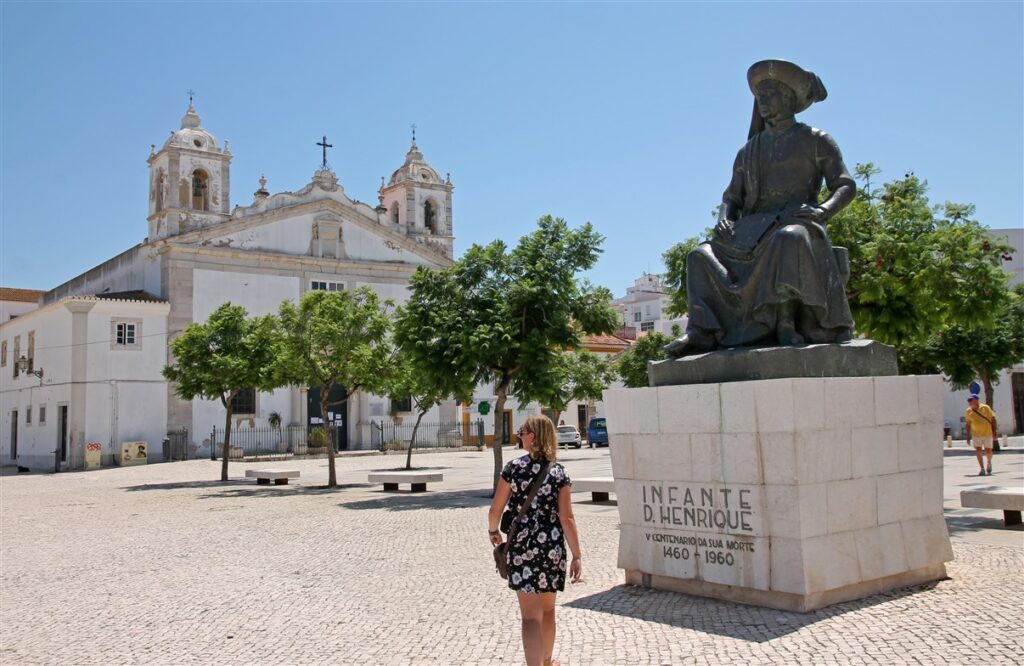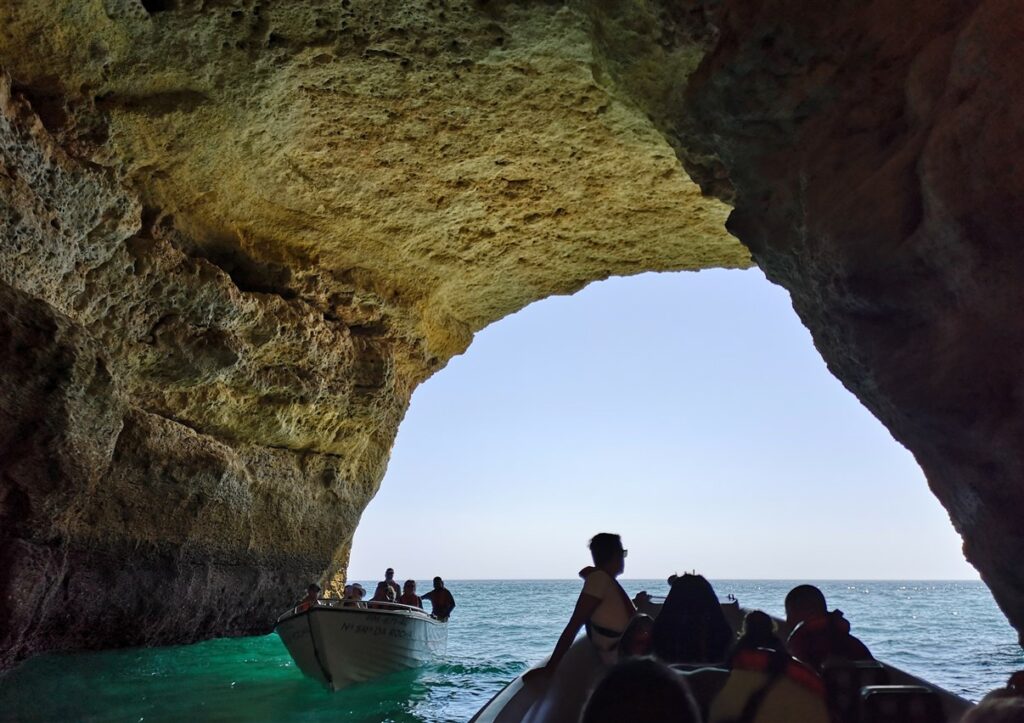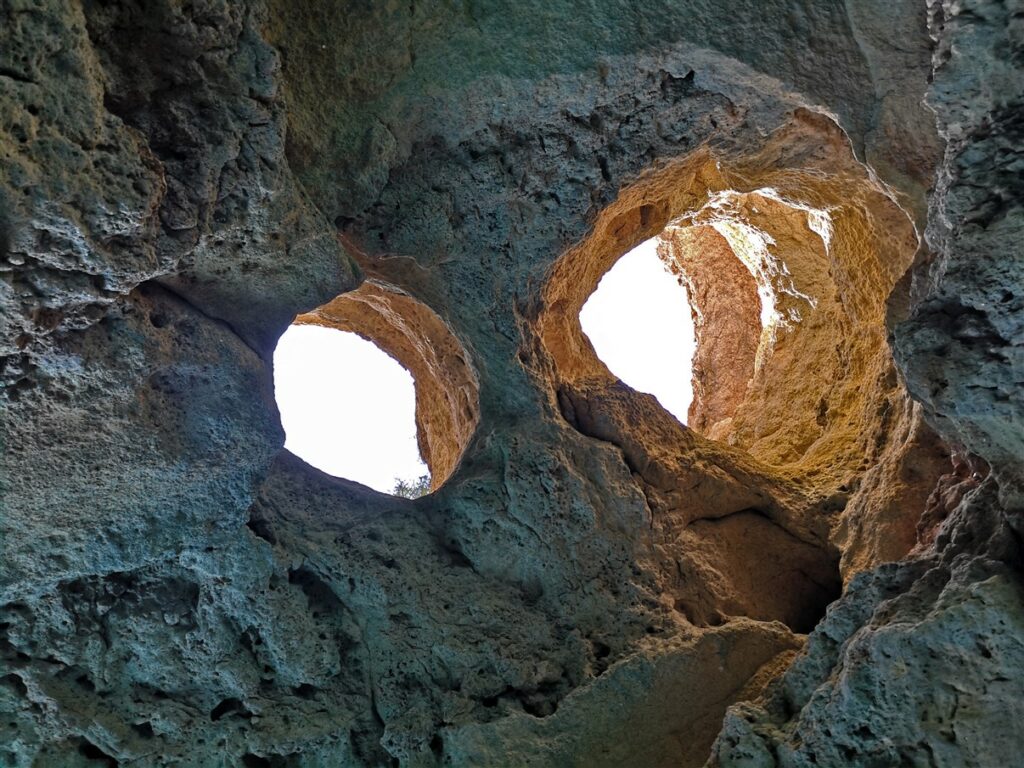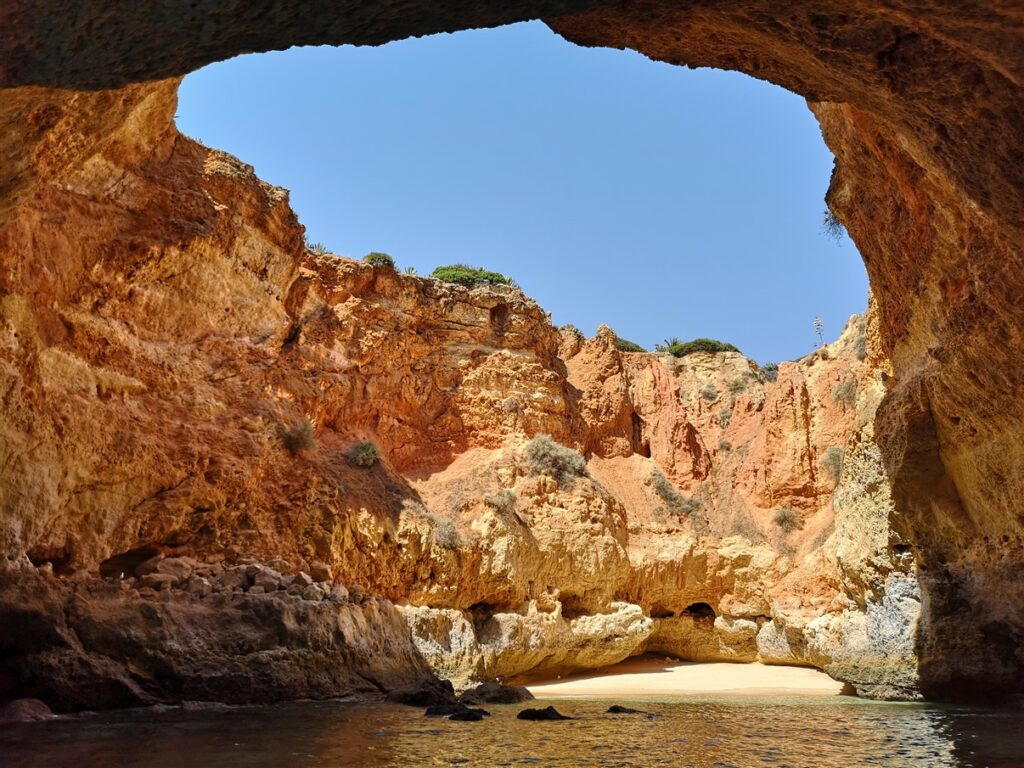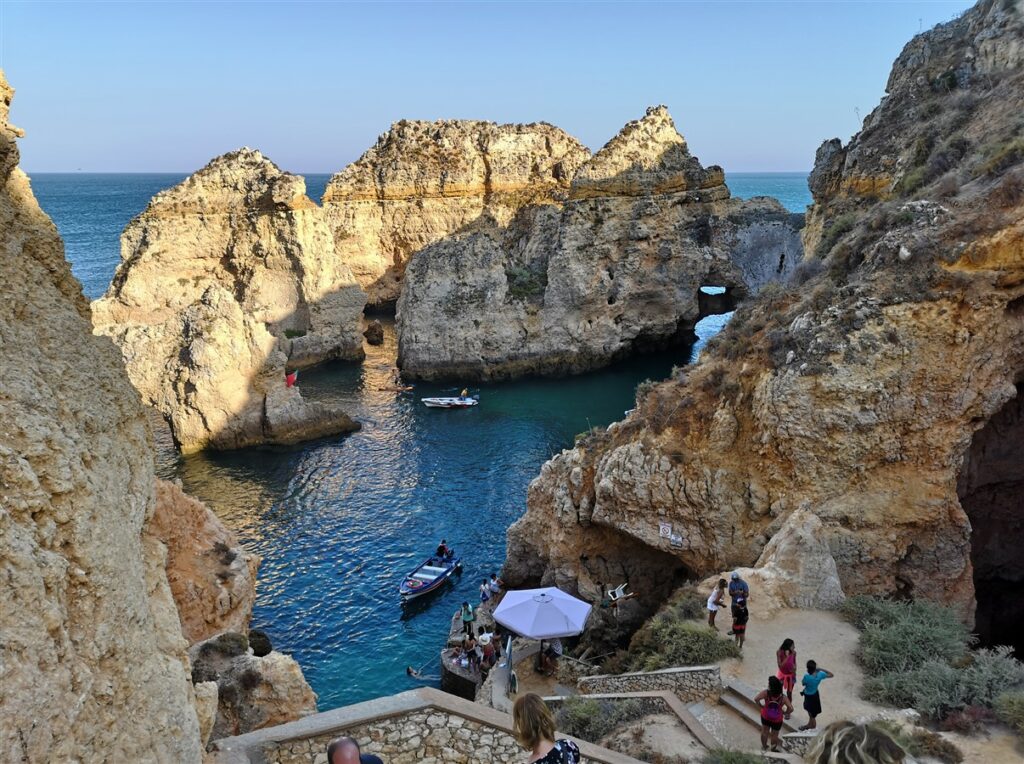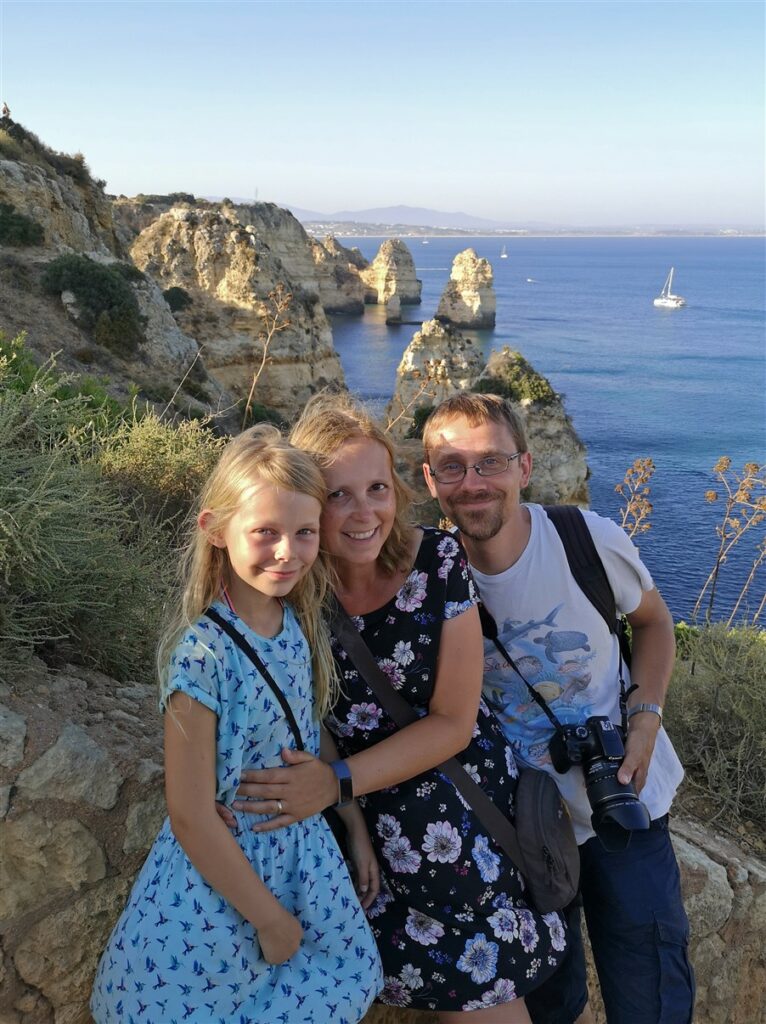When we traveled to Portugal in the summer of 2020, the entire expedition wasn’t without restrictions and risks. The area around Lisbon had already become a red zone (as a result, we had to look for alternative accommodation) and a few days before we left Belgium, the Algarve also became a region of heightened alertness. The reason? A few foreign tourists decided to go partying not far from Albufeira. And of course, this was the region where our second holiday home was situated… Although we did hesitate at a certain point, we still decided to go and that turned out to be the best possible decision. In our first week in Portugal, we discovered the Alentejo, which was a bit of a blind spot to us, but turned out to be a lovely region to explore. For the second part of our stay, we headed southward, to the Algarve. We definitely weren’t planning on wasting all our precious time sunbathing on some beach. We were there to explore!
The Algarve is such a rich region that it is definitely impossible to see all its highlights in only five days. We did make a selection based on our own preferences, though: a healthy mix of nature, culture, breathtaking landscapes and some family activities. In 2020, the Algarve also presented itself at its calmest. No crowds, (almost) only locals who were extremely careful with regards to COVID-19. There were strict safety rules as well, including a mandatory use of mouth masks in public places. In addition, we also downloaded an app (Info Praia) monitoring the number of people per beach, so we could locate where the crowds were and avoid them. During our stay, the app never indicated any beach to be overcrowded. Local people told us they had never seen the Algarve so quiet in summer. Despite the “high risk” our government had attributed to this region, we always felt safe and at ease.
For anyone who would like to visit the Algarve in the near future but has only limited time, we would like to provide a tentative 5-day schedule that covers many highlights and also pleases the entire family. As you will notice, we deliberately kept the pace low, so you can easily fit in some of your own must-do’s.
Day 1: Acclimatization – a city trip to Lagos
Since our holiday home was situated in the central part of The Algarve, we chose the photogenic little town of Lagos as the starting point for most of our excursions. On day one, we recommend you take things easy and start with an exploration of Lagos itself. You can park your car at the Parque De Estacionamento De Lagos, just outside the marina. From there, you walk to the marina, a place with many restaurants and a relaxed atmosphere. We can recommend bistro Quay Lagos for a very enjoyable lunch. They take a lot of care in preparing dishes that look delicious ànd also taste that way. The small terrace is also a lovely spot to enjoy your meal.
From the marina, cross the bridge and follow the Avenida dos Descobrimentos to the south. There’s a wide promenade along the water. You’ll pass by the replica of the caravel “Boa Esperança”, one of the ships used by Bartolomeu Dias to round the Cape of Good Hope. Walk on until you reach the Castelo dos Governadores, originally built my the Moors. You can enter the city center through the Plaza Lagos, with its statue of Prince Henry the Navigator (Infante Dom Henrique), initiator of the Age of Discoveries, who would leave on his expeditions from the port of Lagos. His voyages brought wealth ànd slaves to Portugal. On the western corner of the square you will find the Mercado de Escravos, a building from 1444 that hosted the very first slave market in Europe. It is now a museum about the (hi)story of slavery.
Follow the Rua Henrique Correia da Silva until you find the Igreja de Santo António, one of the finest baroque churches in Portugal. The lower walls of this 18th)century church are decorated with traditional blue and white azulejo tiles. The upper walls are almost entirely covered in intricately carved gold-plated woodwork. It is truly breathtaking in its abundance. We were not allowed to take photos inside, but we can assure you that it definitely is a must-see.
Strolling around through the narrow streets of Lagos is a treat in itself, and the street art just gives it an added value. We specifically searched for two works by the Belgian artist ROA, who specializes in large, true-to-life, black-and-white paintings of (mostly dead) animals. We did find his snails, but his dead flamingo had been replaced by a new piece of art.
You have reached the sea by now. If you walk back to the marina from here, you’ll pass the 17th-century Forte da Ponta da Bandeira, an essential part of the fortifications that defended the city against attacks from the sea. At this point it is also possible to go down to one of the beaches and enjoy the sun and the water.
Day 2: The incredible coastline around Lagos
If there’s anything The Algarve is famous for, then it certainly is its stunning coastline. And there are two ways to discover it: either from land or from the sea. In Lagos, you can easily combine both points of view. One option would be to book a spectacular speedboat tour from the port of Lagos before noon. Along the stretch of the marina, there is a wide array of operators from which to choose. Usually, you have to book these popular tours in advance, but since there were almost no tourists, we just booked and left a few hours later.
The speedboat will bring you to many caves and dramatic rock formations up until the world famous Benagil Cave and back. Since it is so popular, your boat won’t stay long inside and will soon make place for another set of tourists. If you would like to reach the beach that opens up during low tide inside the cave, you can hire a canoe and paddle all the way from a nearby beach. Swimming is not recommended and simply dangerous due to the currents and abundance of boats.
Although you’ll end up being squashed together with many other tourists on a small boat, it still is the best way to take in the unique vistas of that extraordinary coastline. The kids will also love the speed of the little vessel and if you have a crazy captain he might surprise them with a few spectacular twists and turns. Each cave or rock has its own specific (unofficial and probably touristic) name, related to its shape or some special characteristic. We can’t remember them all, but the Paradise Cave was definitely our favourite, together with the Benagil of course.
In the afternoon you could head over to the Ponta da Piedade lighthouse. From there, you can start your own exploration of the coastline with its rugged cliffs on foot. You can choose to go either to the east or west from the lighthouse. The cliffs are spectacular on each side, but the most beautiful part is definitely immediately east of the lighthouse (to the left that is). A few steps will take you close to the water. Your Instagram account will be very pleased with you if you do so!
Day 3: This one is for the kids…
We are convinced your kids will have liked these first two days already, but we are also sure they’ll love day three the most. Our daughter, Febe, turned 10 years old in Portugal and we knew she really wanted to visit one of the water parks in The Algarve. So we took her to Slide & Splash in Lagoa. The park consists of a wide array of different water slides for every age and a pool. You can easily spend a full day here and never get bored.
We recommend to bring diving / snorkeling shoes to walk around. The concrete can get extremely hot, making it a bit of a painfull day for your feet.
We also bought tickets for Sand City FIESA, a sand sculpture festival that has been held in Lagoa for the last 17 years. Fifty-five thousand tons of sand transformed into numerous wonderful sculptures that are spread over an area of 6 hectares. This year’s theme was “Around the World in Sand!” and it was really fun to guess which countries or areas were depicted. We even recognized a few celebrities from movies and TV series.
Day 4: Go West!
Obviously, not all highlights are concentrated around Lagos. Day 4 takes you away from the center of The Algarve and takes you to the south-westernmost point of Portugal: Cabo de São Vicente (Cape Saint Vincent). Once believed to be the end of the world, the 60 meter high cliffs are still a spectacle to behold. It can become quite windy here, so be careful not to be blown off!
From there, it is possible to head north and discover a few astonishing beaches of Portugal’s Atlantic coast. Everything you want to know about these beaches can be found in last week’s blog post on that subject.
On your way to the cape, don’t forget to stop at Salema Beach. Not only because it’s a lovely beach with rocks to crawl over and many tidal pools full of fish and other wildlife, but also because of something completely unexpected. Just a few meters west of the staircase that leads to the beach, there is a flat cretaceous slab of rock that features a set of dinosaur (ornithopod) footprints. There are numerous dinosaur tracks to be found in the south of Portugal, but these are considered to be some of the best preserved. You can clearly see the three toes of the dinosaur’s foot!
We had lunch at A Boia restaurant, which was definitely agreeable. The view (beach and sea) is obviously a plus here.
Day 5: Conclude your stay with its highlight
What better way to say farewell to The Algarve than with a definite highlight? First of all, you need to head over to the port of Lagos again, but this time to go on a dolphin watching tour. We would like to recommend you book with Sealife Dolphin Watching Lagos. They are one of the most professional and established dolphin watching companies in the Algarve ànd they are eco- and animal-friendly as well.
Since the dolphins are wild animals, no guarantees can be given, but the company does have a high success rate. The week before we went on a tour with them, they even saw a couple of killer whales off the coast of Lagos!
We were extremely lucky to witness a large pod of dolphins, hunting and playing close to our boat. We were able to watch them for about an hour, which was a unique experience.
After such a thrilling experience, it would be a good idea to end your stay in The Algarve with a few hours of relaxation on one of the many beaches in and around Lagos. Be aware of the tides, though, since they can be treacherous and unreliable. We went down to Praia dos Estudantes, only to get all our bags wet within minutes and being forced to get back up again. It is definitely a good idea to have a look at the tide table of the area before you go!
Conclusion
Surely, you could stay in The Algarve for a month and discover something new every day. There are a few wildlife reserves in the neighbourhood, for example, but due to the hot weather, there wasn’t a lot of wildlife. We visited the Lagoa dos Salgados and only found a few storks, spoonbills, Eurasian curlew and a cattle egret.
But there is more, much more. For those who like beaches: you can easily try out a new beach every day for weeks. And on some beaches the snorkeling is supposed to be great as well. Also, we haven’t even started to explore the east, including the area around Faro. So there’s definitely room to extend our proposed day schedule. But we are positive that what we have presented here is at least a decent start. Enjoy your stay!







